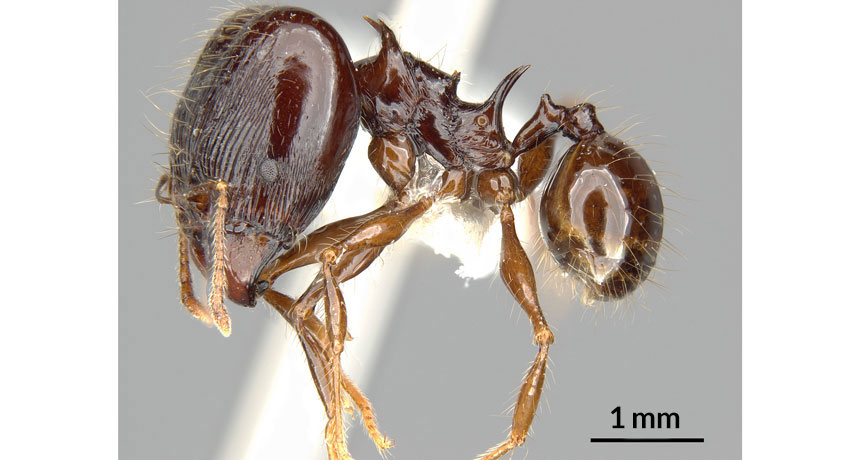Newly discovered big-headed ants use spines for support
Muscles hidden in spiky growths along necks of worker ants

A STORM OF SPINES A newly discovered ant species, named Pheidole drogon after a dragon in Game of Thrones, sports spines that resemble a dragon wing and claw. The ants can’t fly or breathe fire, but their spines are filled with muscles, which may lend support to their giant heads.
Masako Ogasawara/OIST







